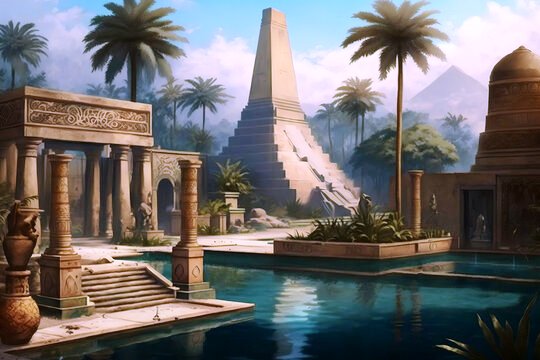Abydos (ruin)
Abydos, also Thinis, is an ancient city in the emirate of Upper Egypt, near the city of Sohag, within the Ottoman Empire. Though it once held immense significance at the dawn of the Old Kingdom (c. 3200 BC), its ancient splendor has long since faded, buried beneath the sands of time. The city was the burial site of the First and Second Dynasty kings, but little remains of its once-great structures. The famed sanctuary of Osiris, once a sacred destination, has been lost beneath the ruins of successive settlements, many of which were themselves destroyed by war, flooding or sheer neglect.
Abydos retains its religious importance, however, even as its physical presence has dwindled. Since the Middle Kingdom (2052–1778 BC), legend has held that one of the oldest pharaonic tombs conceals a passage leading directly to the grave of Osiris. This belief elevated Abydos as a spiritual destination, and for centuries, it was the aspiration of devout Egyptians to have their remains interred in or near the city. Even those unable to afford a full tomb sought to establish a cenotaph or a simple marker along the "Stairs of the God", ensuring their eternal association with Osiris, lord of the underworld.
The Hyksos, who invaded Egypt shortly after 1700, left little trace of their presence in Abydos. The Temple of Seti I (1317–1301 BC), one of the city's greatest architectural achievements, is said to lie buried beneath the villages that now occupy the region. What little we know of its grandeur comes from the Greek geographer Strabo, who visited Abydos in the 1st century BC. He described the city enthusiastically, referring to Seti's temple as the “Memnonium” and implying that Abydos must have once been a major metropolis.
Abydos was already in ruins by the time of Strabo's visit in the 1st century BC, its former grandeur reduced to scattered remnants of temples and tombs. He described the city with admiration, referring to the Temple of Seti I as the Memnonium, a name often given by the Greeks to great and mysterious ruins of unknown origin. Though Strabo implied that Abydos must have once been a great city, by his era, it was more a site of pilgrimage and memory than of active governance. Over the following centuries, the encroachment of desert sands and the gradual destruction of remaining structures ensured that the city's legacy endured more through legend than through any physical presence.
By 1650, little of its past remains visible, with travelers finding only the faintest traces of foundations and broken stones hinting at its former importance. Despite this, the sacred aura of Abydos lingers, with local inhabitants still recounting tales of Osiris’s tomb and the pharaohs who sought eternity in his shadow.
